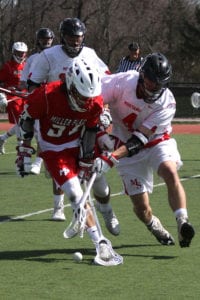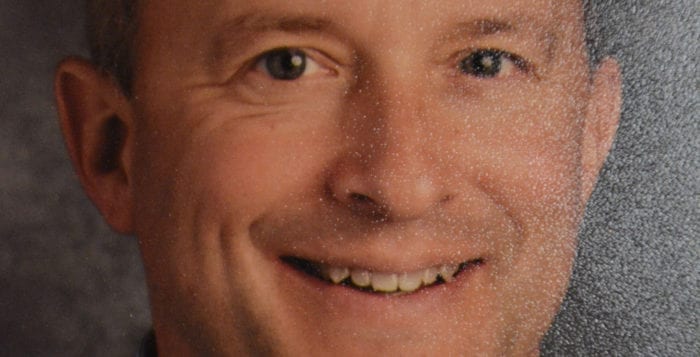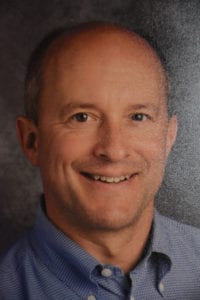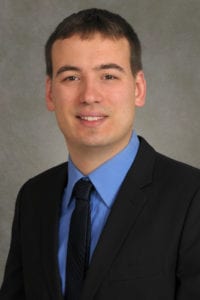Not even halfway through the season, the Miller Place boys’ lacrosse team already has the same amount of wins that it ended with last year, turning its program worst record in 2016 into the best start in team history this year.
On April 10, in a battle of undefeated teams, the Panthers produced their seventh straight win, a 10-8 edging of Mount Sinai, to remain perfect at 7-0, with a 5-0 streak in Division II. Last season, Miller Place finished with a 7-9 overall record.

“We knew they were going to come prepared for us and play tough, so we stuck to our game plan and made them try to beat us,” Miller Place senior midfielder Anthony Beck said. “It feels good to come out and take the battle of undefeated teams, and take the win from a crosstown rival.”
Miller Place junior attack Anthony Seymour put the Panthers on the board less than a minute into the game with a quick shot to the top left corner, and Beck followed him up with a shot straight up the middle after the ball was rotated around the cage while Miller Place looked for an opening.
“We pushed the ball really well, we possessed for the most part and we played as a team,” Beck said. “We didn’t try to do too much and we stuck together.”
The Panthers continued to pounce with a balanced attack, as next to light up the scoreboard was junior attack Patrick Doyen off a pass from Seymour.
Miller Place forced several turnovers, and Mount Sinai called for two timeouts in the first to try and shift the tempo. With 3:35 on the clock, Mount Sinai senior midfielder Jason Shlonsky rocketed a rebound past an unprepared Matt Leen for the Mustangs’ first point.
Beck added another unassisted goal for a 4-1 advantage at the end of the first 12 minutes.

“It’s been unbelievable how we’ve came together since the first day of practice,” Beck said. “This is a group we’ve been waiting for. We’ve been playing really well together.”
Miller Place senior attack Jack Walsh scored next, laying out across the front of the net and scoring while in mid air. Head coach Keith Lizzi said with the loss of senior midfielder Kevin Gersbeck to injury, he told his team everyone needs to up their game to fill the hole, and they’re doing it.
“Jack stepped up — and he’s been doing that all year — he’s one of the top scorers in the county,” Lizzi said. “And Anthony Beck has just been so consistent between the faceoffs, defense and offense. He’s our No. 1 utility guy out on the field.”
Mount Sinai seniors Nicholas Cesario and Nicholas Rose closed the gap, before Beck, grabbing possession off the faceoff, re-extended the margin with his hat trick goal, bringing the score to 6-3 at the halftime break.
“It felt good to dominate the faceoff ‘x,’ get my team some extra possessions and score some goals,” he said. “We’re undefeated right now, we’re taking it one game at a time and we hope to keep it that way.”
Miller Place had a slower second half. They were outscored by Mount Sinai 5-4, but always remained a few goals ahead. Leen, the senior goalkeeper who finished with 12 saves, helped preserve the lead and Walsh also chipped in with two goals and two assists.
“It’s my last year, so I’m trying to get out and do as much as I can,” Walsh said. “We were a little sloppy at times, but we’re all best friends, so there’s a lot of chemistry here.”

Mount Sinai wasn’t without its shining stars in its hard-fought comeback effort. Shlonsky finished with three goals, senior midfielder Robert DeMeo added two goals and two assists, and junior attack Joe Pirreca finished as the assist leader, scoring once and aiding in three others.
Lizzi said although it hasn’t been easy to complete, an already total turnaround from last year, the main motivation has been the Panthers desire for revenge from last year. They’ve already beaten some of those teams this year, like Comsewogue, Sayville and Elwood-John Glenn.
“We’re trying to take it one game at a time, and although the pressure continues to build, this is a group that’s handled it,” he said, adding that with seven Division I college commits and three-year starters the experience has paid back dividends.
Harborfields is next on the schedule, and revenge is on tap after Miller Place lost to the Tornadoes in double overtime last year. The Panthers will travel April 12 to compete in the 11 a.m. matchup.
“Certain games you have circled on the calendar, and this year, that’s one of them,” Lizzi said. “We won a lot of tight games this year that we lost last year, so these kids are playing with a little chip on their shoulder — with something to prove.”












































